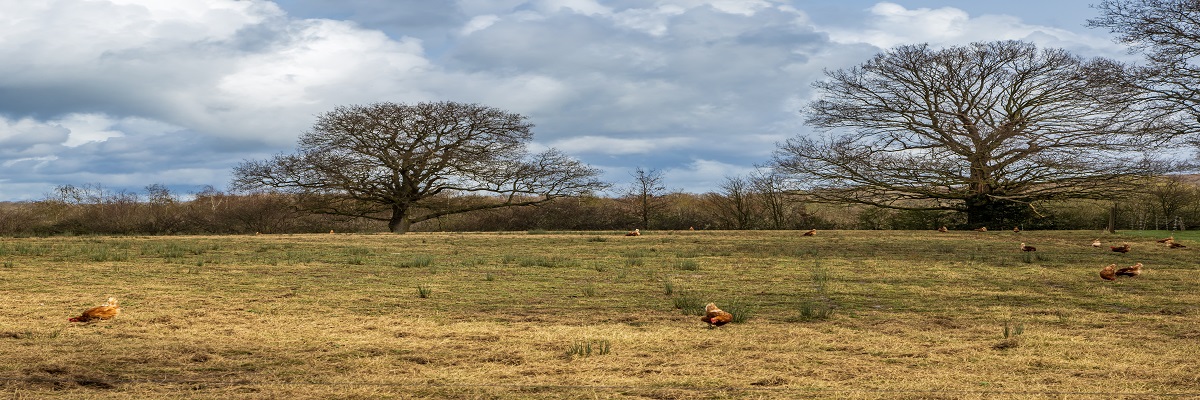Land Business Update | Week Commencing 30 September 2024
Farming
The changing face of land use on farms in England
Defra has just released some data on the amount of land used on commercial farms in England. It is based on returns from the June Census:
- The area of land used nationally for farming on the units fell by 1% in 2024 compared with 2023. However, 2024 was (probably) an unusual year in terms of weather and cropping.
- If we take 2023 as a more typical year, then the total utilised agricultural area has only fallen by 2% since 2000, so not by much, and the total agricultural area, which includes land used for things other than farming on farms, has only fallen by 1% since 2000.
- The area used to grow crops has fallen by 4% since 2000 (from 2023 levels) and the data shows that potatoes and horticultural crops areas have fallen by more than arable crops.
- The area of grassland has increased – temporary grassland by 27% and permanent grass by 1% (both from 2000 to 2023).
- Perhaps one of the most fascinating lines in the data is on the use of land for solar panels. It is recorded as 3,620 acres with grazing or agricultural production underneath the panels plus 3,683 acres of land without farming underneath. The total (7,303 acres) is 0.08% of the total utilised agricultural area in England – a tenth of one percent.
Dairy staffing problems leading to cuts in production
Problems recruiting staff have forced 8% of UK dairy farmers to cut output, according to a survey of 472 dairy farmers by Arla. 16% said they would consider leaving the sector altogether unless the situation improved. The farmers also said that they were paying staff almost a third more than at the end of the 2019 (so before COVID and since Brexit labour movement restrictions took real effect). The number of dairy farms is falling over the long-term although milk output has remained stable.
Compulsory register to protect bird health – registration deadline 1 October
Anyone who keeps birds in England and Wales – including those with just one bird and including backyard flocks, birds of prey and pigeon fanciers – must have signed up to the new compulsory Animal and Plant Health Agency (APHA) register by 1 October. In Scotland, the deadline is 1 December to register with the Scottish government. The register will be used to identify all bird keepers in disease control zones. Caged birds in domestic houses are not included.
Environment
Wales hits 3,000 hectares peatland restoration target a year early
The target for the five-year National Peatlands Action Programme has been achieved a year early and other projects – including ones funded through EU LIFE, national parks, the Heritage Lottery and land owners – have restored a further 1,000 hectares. According to the Welsh Government, each hectare restored reduces emissions by the equivalent of the emissions from @ 2 cars each year or just under 3 tonnes.
Climate Change (Emissions Reduction Targets) (Scotland) Bill
This Bill, recommended by the Climate Change Committee, would enable Scotland to change how it reports on greenhouse gas emissions, so that the nation’s targets are based on five-yearly carbon budgets and so are less affected by annual fluctuations. The Scottish Government has also made other changes in response to the Committee’s last report, including requiring carbon surveys on farms receiving public payments by 2028 at the latest, accelerating Regional Land Use Partnerships and launching a consultation on carbon land tax on the largest estates.
Red Squirrel Awareness Week 30 September to 6 October
The UK Squirrel Accord’s week is focused on increasing awareness of and action for red squirrels, and takes place at the start of the global Squirrel Awareness Month. There are webinars (which we think will be available as recordings) on squirrel ecology, threats and conservation. In addition, Saving Scotland’s Red Squirrels (SSRS) is running the Great Scottish Squirrel Survey by asking anyone to report sightings of red and grey squirrels on their website.
Forestry
Woodland carbon – wood vaulting and stopping decomposition
Climate scientists, led by the University of Maryland, estimate that an almost 4,000 year-old log, preserved under low-permeability clay soil so that it did not decompose, had lost less than 5% of its original carbon. The findings are likely to increase interest in ‘wood vaulting’, which is burying wood to stop it decomposing, as a climate solution. The research team estimates that wood vaulting could sequester up to ten metric gigatons of carbon dioxide a year and cost about $30 – 100 per metric ton when the process is optimised.
Property and economy
UK Net Zero Carbon Buildings Standard launched for new buildings
This new voluntary standard, which is supported by a large range of industry bodies including BRE, RICS and RIBA, includes emissions in both the building and in running it. The Standard suggests the following limits:
- 430kg of carbon dioxide equivalent per square metre for the building materials (including their extraction and transport) and for constructing the building. This is roughly half the amount used in a typical new build house.
- Energy use for heating, lighting, ventilation and appliances – 45kWh/m2/year (current typical is 120).
- Of this, energy for heating is limited to 20kWh/m2/year (current typical is 56).
- Clean electricity generation onsite – a minimum of 60-75kWh/m2 of the building’s footprint/year (depending on location).
The amounts / limits in the Standard are based on property’s share of the carbon budgets set by the Climate Change Committee and the group behind it hope that it will become standard practice for everyone.
More heat pumps being installed
Over 3,000 heat pumps were installed per month in Q2 2024 using government grants. This is the highest rate of installation (apart from an odd blip in Q1 2022 when there was a significant increase and then dip). Installations are now over three and a half times higher than in the same period five years ago. Applications increased since the Boiler Upgrade Scheme grant was increased in October 2023, although Energy Company Obligation (ECO) scheme installations in the homes of people in fuel poverty, have also increased. Over half of the installations under the Boiler Upgrade Scheme are in rural areas and most of the heat pumps are replacing gas heating (49%) and oil (20%). The new generation of heat pumps with R290 refrigerant are capable of heating water to 75oC, making them better for less well insulated buildings, working with smaller radiators and with smaller water cylinders.
New homes approvals in England drop to ten-year low
Only 53,500 houses were approved in Q2 2024. This is just over half what it was three years ago and the lowest level since 2014. House builders blame the drop on the decision by the former government to remove binding housing targets for local authorities. The number of new housing schemes has fallen to the lowest level since the Home Builders Federation began collecting that data in 2006, with only 2,400 schemes started in Q2 2024.






